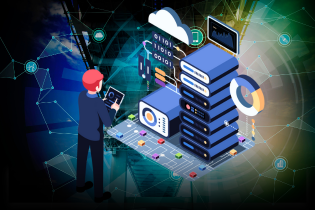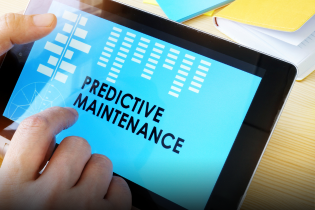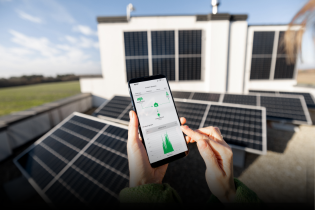The urgency of climate change has spurred a global movement towards net-zero emissions. As businesses strive to minimize their environmental impact, the Internet of Things (IoT) emerges as a powerful ally, offering innovative solutions for reducing carbon footprints and achieving sustainability goals.
Understanding Net Zero
Net-zero emissions signify a balance between the amount of greenhouse gases released into the atmosphere and the amount removed. This critical objective is crucial for:
Mitigating Climate Change: Reducing global warming and the severity of extreme weather events.
Fulfilling International Commitments: Complying with international agreements like the Paris Agreement and COP26.
Meeting Consumer Expectations: Aligning with growing consumer demand for sustainable and environmentally conscious business practices.
The Role of IoT in Achieving Net Zero
IoT technology transcends operational efficiency; it empowers businesses to address environmental challenges head-on. By connecting devices, sensors, and data streams, IoT provides valuable insights and actionable solutions that drive sustainability across various sectors.

1. Real-Time Energy Monitoring and Optimization:
- Unveiling Energy Usage Patterns: IoT sensors monitor energy consumption across all facets of a facility, from machinery to lighting, providing real-time data on energy usage patterns.
- Identifying Inefficiencies: This data analysis reveals areas of excessive energy consumption, enabling businesses to pinpoint and address inefficiencies. For instance, automated systems can power down non-essential equipment during non-operational hours, significantly reducing energy waste.
- Predictive Analytics: IoT platforms leverage predictive analytics to forecast future energy demands, allowing businesses to proactively adjust operations and optimize energy usage.
Impact: Companies implementing IoT energy management solutions can achieve up to 20% energy cost savings, translating to reduced carbon emissions and enhanced environmental sustainability.
2. Smart Grid Optimization: Powering a Sustainable Energy Future:
IoT transforms traditional power grids into intelligent, self-regulating systems.
- Real-time Data Analysis: IoT sensors collect data on energy consumption, grid loads, and renewable energy availability, providing real-time insights into grid performance.
- Enhanced Grid Stability: Smart grids optimize energy distribution, balancing supply and demand, and minimizing energy wastage.
- Renewable Energy Integration: IoT facilitates the seamless integration of renewable energy sources like solar and wind power into the grid, maximizing their utilization and reducing reliance on fossil fuels.
Impact: IoT-enabled smart grids can reduce energy losses by up to 15% and increase renewable energy usage by 30%, significantly contributing to a cleaner energy future.
3. Decarbonizing Transportation: Smart Mobility Solutions
Transportation is a major contributor to global emissions. IoT plays a crucial role in decarbonizing transportation through:
- Fleet Optimization: IoT-enabled GPS trackers and fuel monitoring systems optimize routes, minimizing fuel consumption and reducing emissions.
- Electric Vehicle (EV) Optimization: Real-time battery monitoring systems enable efficient energy management for EVs, improving vehicle performance and range.
- Smart Parking Systems: IoT-powered smart parking solutions minimize vehicle idling time, further reducing emissions.
- Connected Public Transportation: IoT enables real-time updates for public transportation, encouraging a shift from private to public transport, thereby reducing overall emissions.
4. Industrial Automation and Predictive Maintenance:
- Optimizing Operations: IoT-enabled automation optimizes industrial processes, reducing energy consumption and minimizing waste.
- Predictive Maintenance: IoT sensors monitor equipment health, enabling proactive maintenance and preventing unexpected breakdowns, which often require significant energy expenditure for repairs and restarts.
- Smart Factories: IoT-driven smart factories integrate robotics, AI, and real-time analytics to optimize operations, enhance energy efficiency, and minimize environmental impact.
5. Renewable Energy Integration:
- Maximizing Renewable Energy Output: IoT sensors monitor the performance of renewable energy sources like wind turbines and solar panels, optimizing their output and ensuring maximum energy generation.
- Predictive Maintenance for Renewables: IoT enables predictive maintenance for renewable energy infrastructure, ensuring optimal performance and reducing downtime.
- Grid Integration and Balancing: IoT facilitates the seamless integration of renewable energy sources into the grid, ensuring grid stability and balancing supply and demand.
6. Precision Agriculture: Sustainable Farming Practices
- Optimizing Resource Usage: IoT sensors monitor crop health, soil moisture, and weather conditions, enabling precision agriculture practices that optimize water and fertilizer usage, minimizing waste and reducing environmental impact.
- Reducing Emissions from Livestock: IoT-enabled monitoring systems optimize livestock feeding schedules, reducing waste and minimizing methane emissions.
7. Carbon Capture and Storage (CCS) Optimization:
- Enhanced Efficiency: IoT sensors monitor the performance of carbon capture systems, ensuring optimal operation and maximizing CO2 capture efficiency.
- Leak Detection and Prevention: Real-time monitoring of CO2 storage sites helps detect and prevent leaks, ensuring the safe and secure storage of captured carbon.
Challenges in Implementing IoT for Net Zero
Despite its immense potential, implementing IoT for net-zero initiatives presents several challenges:
- High Initial Investment: The initial investment in IoT infrastructure, including sensors, gateways, and connectivity, can be significant.
- Data Security and Privacy: Protecting sensitive data generated by IoT devices from cyberattacks is crucial.
- Infrastructure and Connectivity: Ensuring reliable connectivity and robust infrastructure for IoT devices across all locations can be challenging.
- Integration Complexity: Integrating IoT systems with existing infrastructure and business processes can be complex and time-consuming.
- Data Overload and Management: Managing and analyzing the vast amounts of data generated by IoT devices requires sophisticated analytics tools and expertise.
- Standardization and Interoperability: Lack of standardization and interoperability between different IoT devices and platforms can hinder seamless integration and data exchange.
Conclusion
The journey towards net-zero emissions requires a multi-faceted approach. IoT technology plays a pivotal role in this transition, empowering businesses to optimize energy usage, reduce emissions, and embrace sustainable practices.
While challenges remain, the potential of IoT to drive a sustainable future is immense. By addressing the challenges and embracing the opportunities, businesses can leverage IoT to achieve their net-zero goals and contribute to a more sustainable and resilient planet.
Contact FSM Connect today to explore how our IoT solutions can help you achieve your sustainability goals and contribute to a greener tomorrow.


